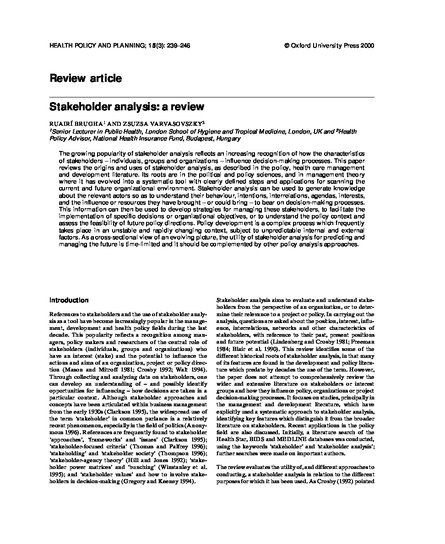
The growing popularity of stakeholder analysis reflects an increasing recognition of how the characteristics of stakeholders – individuals, groups and organizations – influence decision-making processes. This paper reviews the origins and uses of stakeholder analysis, as described in the policy, health care management and development literature. Its roots are in the political and policy sciences, and in management theory where it has evolved into a systematic tool with clearly defined steps and applications for scanning the current and future organizational environment. Stakeholder analysis can be used to generate knowledge about the relevant actors so as to understand their behaviour, intentions, interrelations, agendas, interests, and the influence or resources they have brought – or could bring – to bear on decision-making processes. This information can then be used to develop strategies for managing these stakeholders, to facilitate the implementation of specific decisions or organizational objectives, or to understand the policy context and assess the feasibility of future policy directions. Policy development is a complex process which frequently takes place in an unstable and rapidly changing context, subject to unpredictable internal and external factors. As a cross-sectional view of an evolving picture, the utility of stakeholder analysis for predicting and managing the future is time-limited and it should be complemented by other policy analysis approaches.